Tech Billboard Decoder: The Great Tech Vibe Shift
Tech companies used to portray themselves as do-gooders. But as Palintir's new billboard suggests, their commitment to domination was there all along.
A guide to the best, worst, and possibly scariest bathrooms in the Bay Area — the parks edition
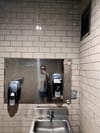
One of the few remaining free joys in the Bay Area is soaking up the good weather in a nice park. Unfortunately, the restrooms in these parks are often missing entirely, merely unpleasant, or mildly horrifying. As a lifelong runner, I have been stopping to pee in park bathrooms for decades, making note of which ones are worth revisiting and which should be avoided at all costs. For this story, I evaluated fourteen bathrooms in Oakland, San Francisco, Alameda, and Berkeley to help you find the good, sufficient, and maybe even great restrooms around the Bay Area.
Here are my criteria:
Amenities: A bathroom can earn up to… 10 points
Appearance: A bathroom can earn up to… 10 points
Smell: A bathroom can earn up to… 10 points
After scoring each category, I added up the points for each restroom to develop a score out of 30 for each restroom. Here are the rankings, from best to worst:
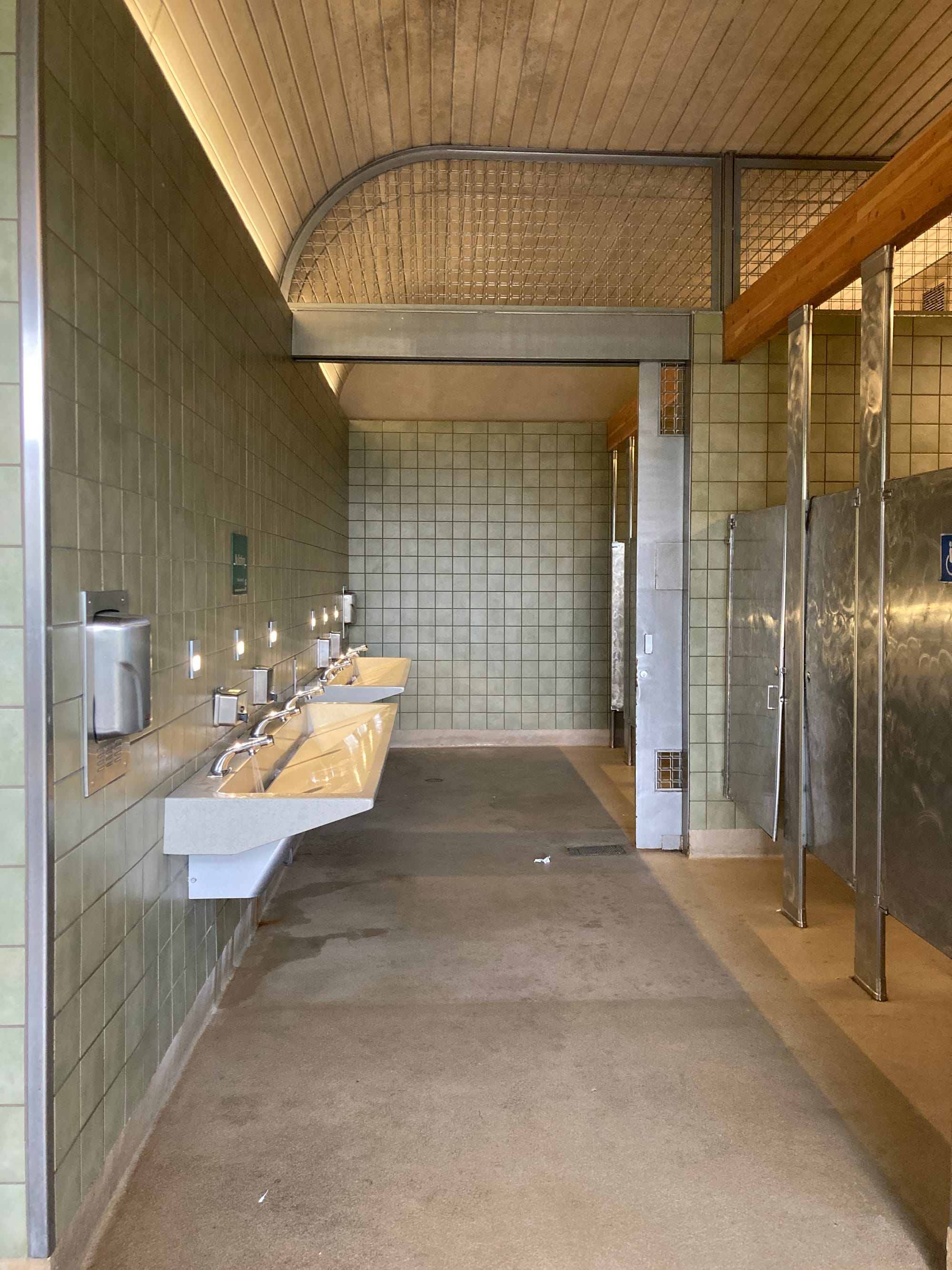
Tucked into the hillside on the north side of Mission Dolores Park is a gleaming, green gem of a bathroom. Inside you will find spotless floors, fresh air, toilet paper, soap, a functional hand dryer and a changing table. It has many stalls in gendered sections, along with a single stall genderless restroom, which has extra room for children and other people needing assistance. The wood paneled ceiling curves into the green tiled walls, which like almost every restroom I visited, did not have mirrors. This restroom lost one point for a tiny bit of toilet paper and water on the floor, but besides that, it is the gold standard Bay Area public bathroom.
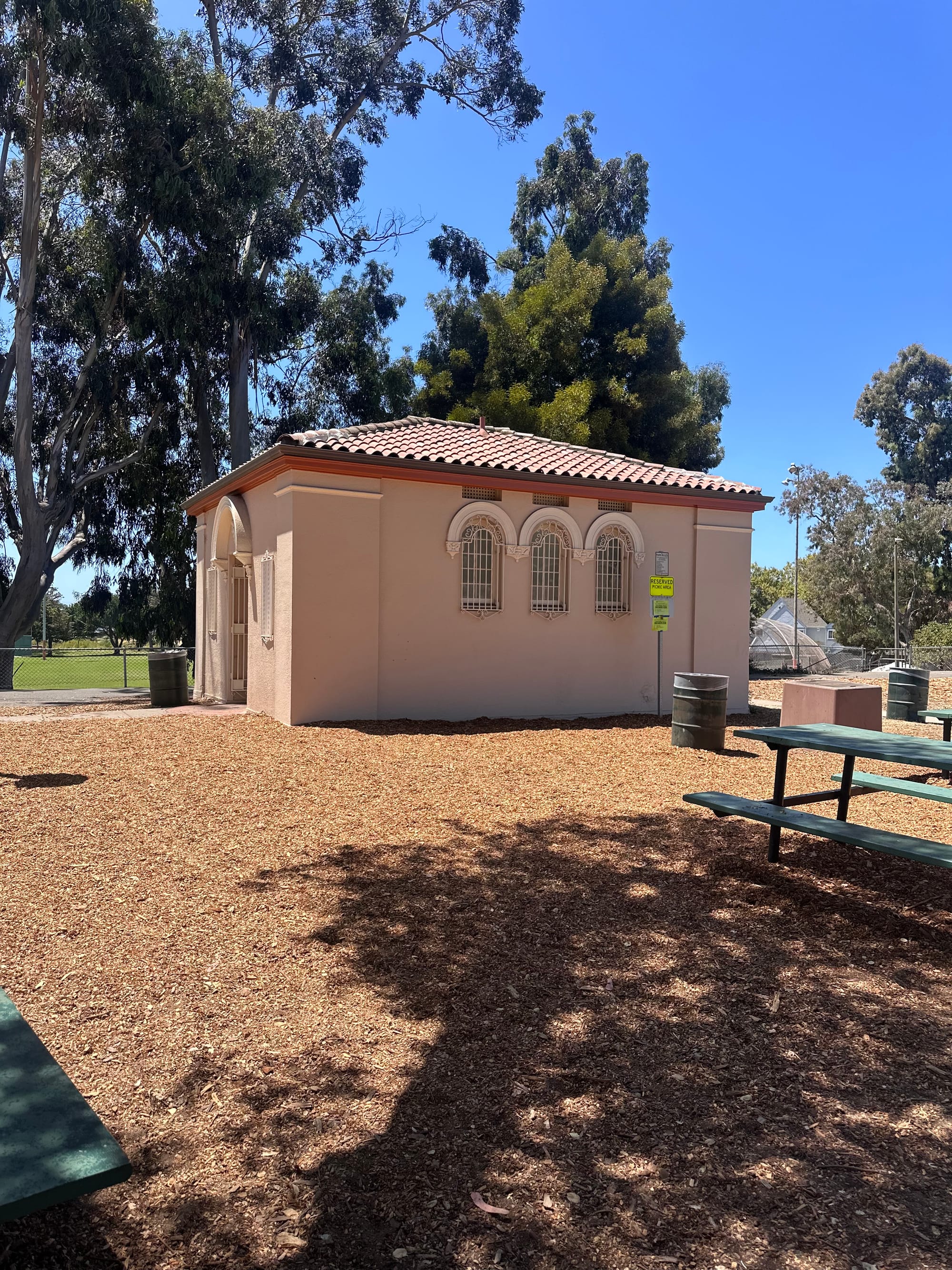
Should you find yourself in the Upper Section of Washington Park in Alameda, perhaps shooting hoops, playing horseshoe, or trying to figure out why the umpire is wearing a top hat and a waistcoat before realizing you’re watching a game of 1886 rules baseball, you are just steps away from an excellent bathroom. The standalone bathroom near the play structure in the Upper Section has it all: lovely natural light, clean floors, soap, a sink, a functional hand dryer, a total absence of scent, and a changing table. It is slightly less sparkling and architecturally interesting than the Mission Dolores restroom, which cost it two points in the "appearance" category and landed it in second place.
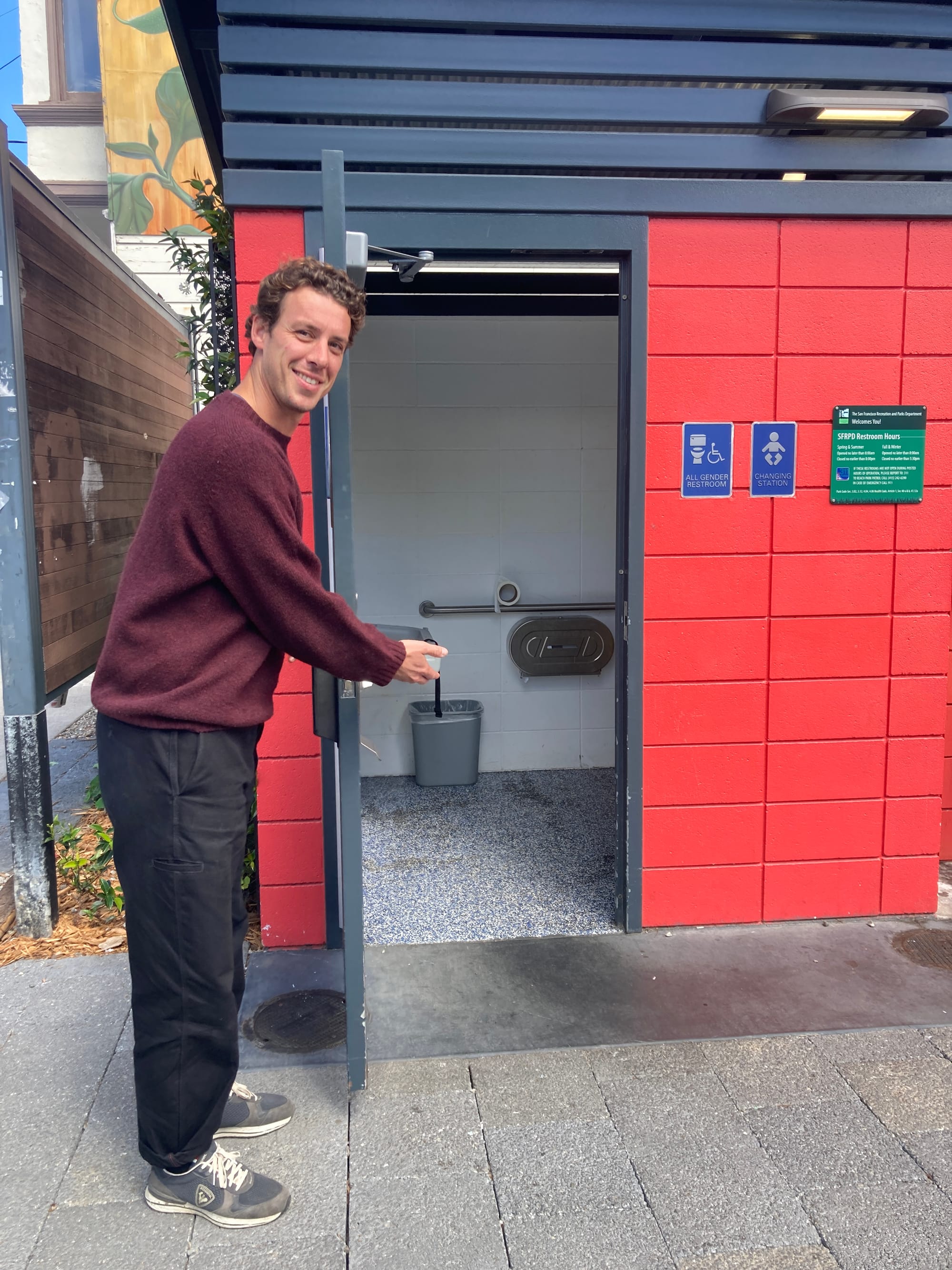
This is the only restroom I encountered that was infamous not for its lack of cleanliness but for its construction costs. As covered by The New York Times, ABC News, and even The Guardian, this bathroom originally arrived with a $1.7 million price tag, which was to be paid by a grant from California State Parks. Initially, the City of San Francisco had planned to build a custom restroom, and according to the City, the $1.7 million estimate was developed before an architect had even been hired, and was intentionally high to account for all possible construction contingency costs. After intense criticism, including an article in The San Francisco Chronicle that referred to the plan to build the toilet as “mind-boggling, maddening and…so much of what’s wrong with our city government,” the State announced that it would withhold funding until the City reduced costs. In response to media coverage, Public Restroom Company and Volumetric Building Companies, both modular building and construction firms, approached the City and offered to donate a prefabricated modular restroom and associated installation work—valued together at approximately $425,000—reducing the City’s estimated cost to about $300,000.
The final $300,000 restroom is a showstopper. Its exterior is made of cement blocks painted fire-engine red and wooden panels that still smell like fresh trees. There is a small sign on the wooden wall above the exterior sink and soap dispenser reminding users that “this restroom facility was generously donated by Public Restroom Company & Volumetric Building Companies.” Like many of the restrooms, it loses a few points for a bit too much water and toilet paper on the floor and its lack of a hand dryer.
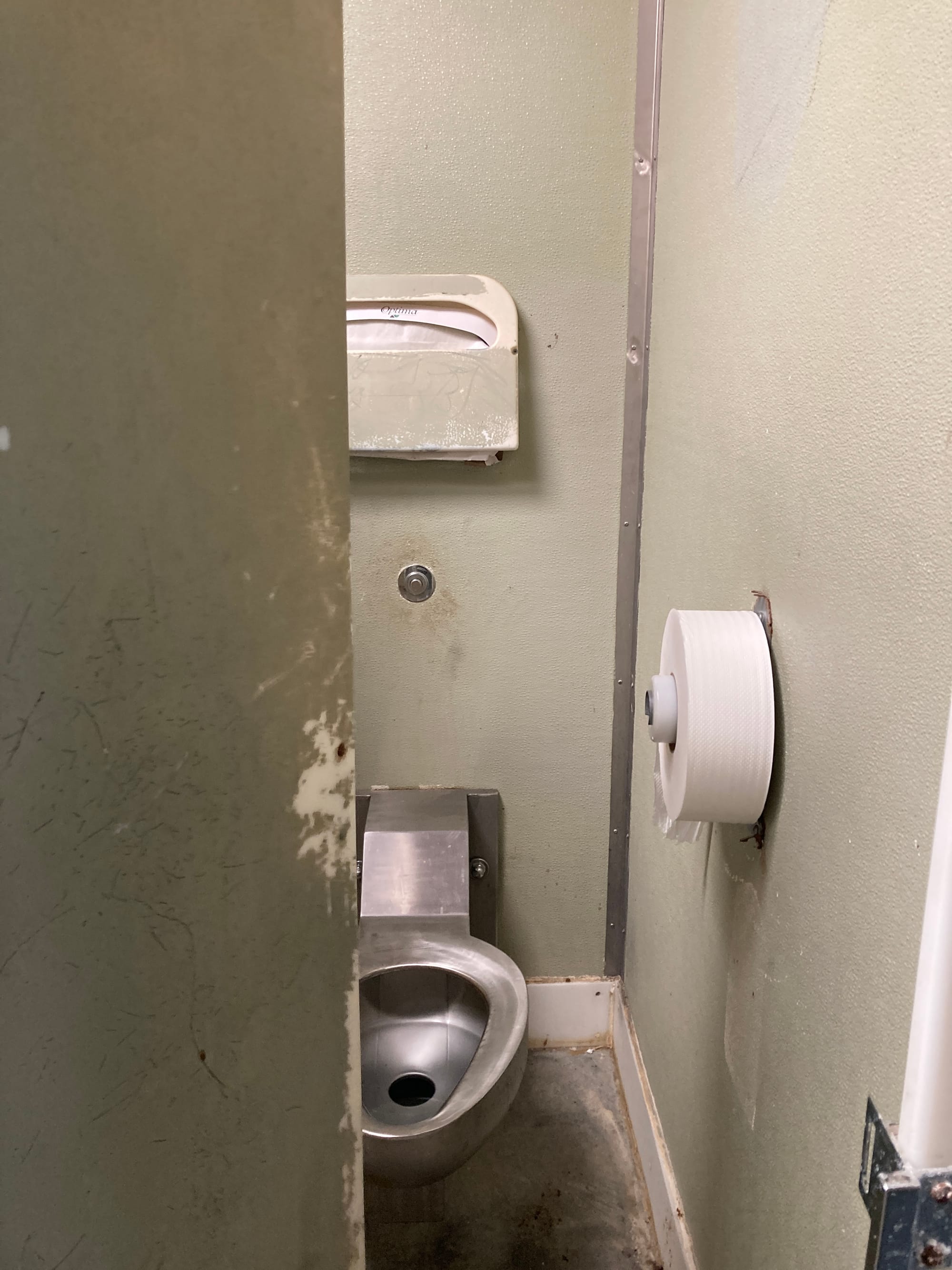
When I visited this restroom on a beautiful sunny Saturday morning at 10 a.m., there were a few people hiking on the trails with their dogs, and the restroom was clean, although it looked a bit run down. I also took off points because the sink didn’t drain properly, the hand dryer didn’t work, and there is a specific faux-floral chemical scent in all restrooms in Oakland that I’ve come to despise.
Restrooms in parks in Oakland should be getting cleaner each year, thanks to Measure Q, a 20-year parcel tax passed by Oakland voters in 2020 to better fund park maintenance, homeless services, and stormwater management. The average apartment owner pays $124.52 per year for this parcel tax. This ballot measure required that restrooms be cleaned “more than once per day, especially on weekends.”
According to data presented by city staff to the Parks and Recreation Commission Advisory Commission on September 10, 2025, the Shepherd Canyon Park restroom was the most frequently cleaned in Oakland from July 2024 through June 2025. In this time frame, 51 percent of park restrooms met the City’s baseline goal of being cleaned once per day, and 14 percent met the Measure Q goal of being cleaned twice per day. At the Commission meeting, City staff said that if they could hire three additional custodians, they could clean all park restrooms twice per day.
Oakland has a system, created by the Department of Transportation in 2019 and now used citywide, that ranks each census tract from lowest to highest priority for City services based on residents’ levels of disadvantage across seven factors: race, income, rent burden, education, disability, age, and single parenthood. Shepherd Canyon Park is located in one of the City’s “lowest-priority equity neighborhoods”, meaning it has a relatively small proportion of residents affected by disadvantage across those seven factors. In the 2024–2025 restroom cleaning data set, none of the five bathrooms that were in parks in high- or highest-priority equity neighborhoods even met the baseline goal of being cleaned once per day. For example, Lowell Park in West Oakland, was cleaned an average of only 23 times per month.
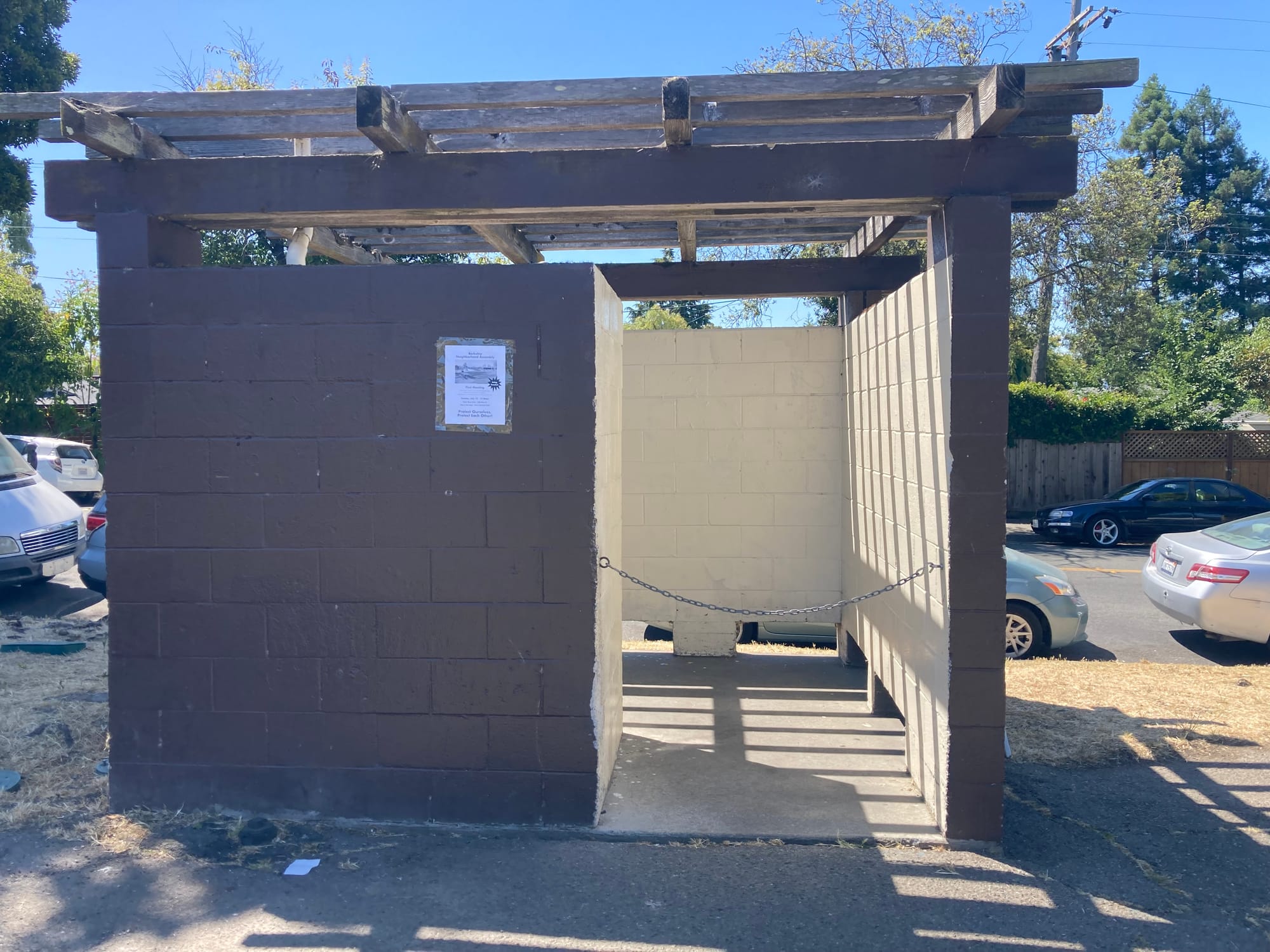
This bathroom has a design that appears to be unique to Berkeley. They feature a doorway but no door, only a large linked chain that you hook from one side of the doorway to the other to indicate that the restroom is occupied. These restrooms also have no roof, although some have a wooden trellis with a large opening to provide some shade. They have a toilet with toilet paper, but no sink and certainly no soap, no hand dryer, and no lighting. These types of restrooms can be found at Cedar Rose Park, Cordonices Park, and Live Oak Park. Because they lack a door, they are open 24/7. I stopped by Cedar Rose Park’s restroom with a friend during a Sunday morning run and asked her if she thought it smelled bad. “It would if it weren’t completely open-air,” she said.
The City of Berkeley’s 2020 Citywide Restroom Study, which assessed conditions at its existing restrooms and suggested locations for additional restrooms, recommended improving the Cedar Rose Park restroom by adding an enclosed roof, lighting, a permanent sink with potable water and soap, a hand dryer, a seat cover dispenser, and crucially, a lockable door. This study also noted that maintenance staff reported that people often flush trash or other items down the toilet. Public restrooms often have design features intended to curb vandalism (such as destroying soap dispensers or mirrors) and misuse (like flushing trash down toilets, sleeping, washing clothes or bathing) through “greater visibility,” like placing the soap dispenser on the outside of a single stall restroom. Perhaps the Cedar Rose Park restroom is an extreme example of attempting to reduce vandalism through “greater visibility.”
Restrooms in Bay Area parks are squeezed from all sides. They are used by people who don’t have reliable places to bathe, wash their clothes, or dispose of trash. They are maintained by fiscally squeezed local governments, who are often understaffed, underfunded, and missing important management and operational processes to maintain restrooms. Restrooms can also be easily vandalized and it is expensive to fix them. But restrooms are an essential public space that are worth protecting and improving. And a few of them are already quite nice!
Additional photography and reporting by Amadou Crookes.